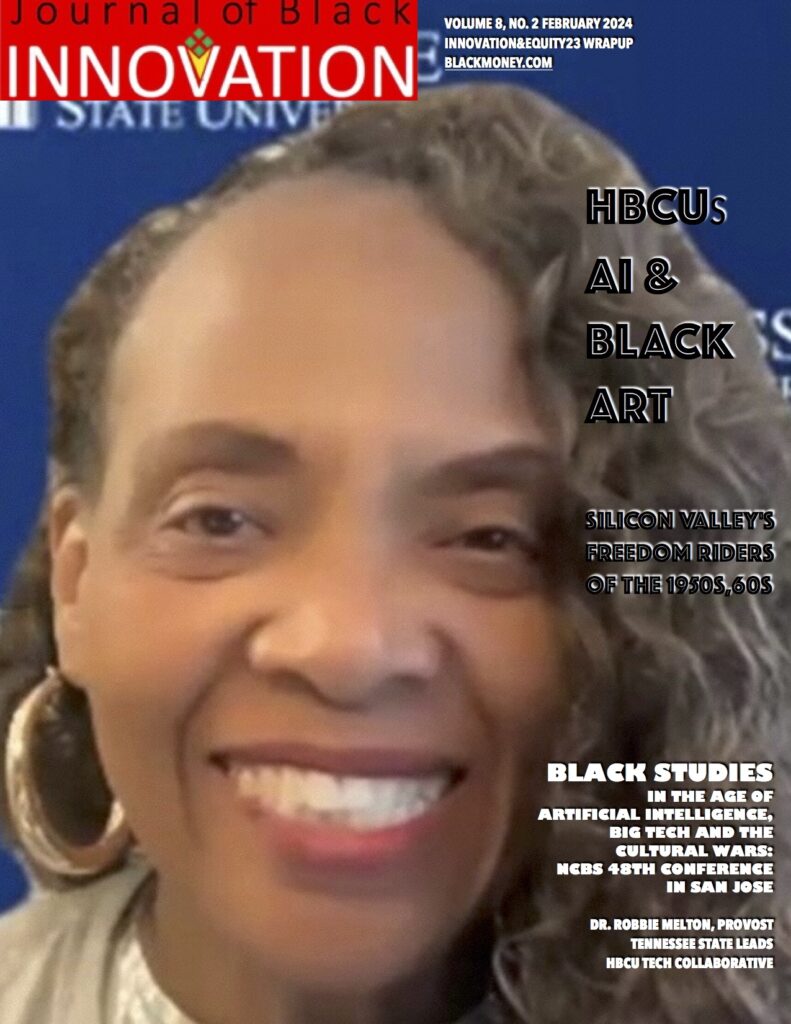

The Freedom Riders of the Cutting Edge were heroes like Silicon Valley Engineering Hall of Fame members Roy L. Clay Sr. and the late Dr. Frank S. Greene who came to the Bay Area from St. Louis in the 1950s to pioneer computer programming and semiconductor design.
When I met them in 1987 as editor of the San Jose Business Journal, they were already three decades into technology pacesetting. Gerald Anderson Lawson, a product of Queens public housing, was another pioneer as the developer of the first cartridge video game.
Their exploits are the subject of two documentaries. Freedom Riders of the Cutting Edge tells how Clay and Greene were at the forefront of making Silicon Valley our nation’s competitive advantage in the 1950s. A Great Day in Gaming tells how we introduced Lawson at the Game Developers Conference in its 25th year, which he was attending for the first time. Clay and Greene implored us to start the 50 Most Important African-Americans in Technology in 1998 as an exhibition at the Tech Museum of Innovation and it is a tradition we have continued each year since.
When you subscribe to the Journal of Black Innovation’s monthly issues, you become part of that community of technology civil rights advocates who saw skill as their avenue to break down barriers. Although Black technologists have grown 40 percent from 400,000 to 560,000, that number should be closer to one million.
Although Dr. Greene would go public with a supercomputer company in the 1980s, almost no Black entrepreneurs have been able to follow him or the success of Dr. Mark Hannah with Silicon Graphics in the late 1980s. The Journal addresses a key barrier between talent and ownership — the ability to be reviewed by peer scholars and analysts.
The quality and stature of the 50 Most allows us to spot the Lawsons and Greenes of the future and connect them with the decisionmakers who decide the standards for the digital economy. The annual Innovation&Equity symposium on Jan. 15 fosters that direct communication. With the launch of the Dr. T. Nathaniel Burbridge Center for Inclusive Innovation last May, we are continuing that dialogue with regular scientific, policy and investment programs year-round.
Even if you can’t attend directly, your subscription fuels the advocacy for all Black-owned businesses through the National Black Business Month in August. Our testimony to such venues as the House of Representatives, California legislature, Federal Reserve, Securities and Exchange Commission is found in Capitalizing Our Heritage State of Black Business, 20h edition. With unprecedented assaults on our liberty, technologists need the agenda and data to make an impact where they are, often quietly, without fanfare.
Even those with advanced degrees, multiple patents and successful exits find themselves having to prove themselves over and over again. The Journal is your trusted ally, not just online, but with direct intervention through our network of those who share the understanding of why such fields as manufacturing, life science, cybersecurity, artificial intelligence are too important to allow hypersegregation, concentration and bias.
Marching in the streets may not be your thing. The history of Black literature and scholarship has many milestones to its credit and most are very enduring. Between now and the Innovation&Equity23 on Jan. 15, 2024, our issues are focused on: Ten companies reaching $1 billion in sales; reaching 100,000 Black federal contractors; getting African-American children and adults vaccinated; manufacturing vaccines in Africa and the Caribbean and securing our ability to vote. You can play a part by lending your expertise and hearing from others on the cutting edge, so please join the community.
Later in 2024, your subscription is your membership in the Sargent Johnson National Museum of African-American Art at Fisherman’s Wharf and the ongoing scientific programs of the Dr. T. Nathaniel Burbridge Center for Inclusive Innovation. Upcoming events include our opening program for the 48th annual National Council for Black Studies March 6 and the National Black Nurses Association in late July.

